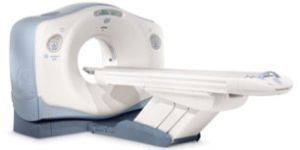Article
CT Scanning Shows Potential in Diagnosing Gout
Author(s):
Computed tomography scanning shows great promise as a means of diagnosing gout when the condition is suspected but traditional tests turn up negative or are unfeasible, a new study finds.

Dual-energy computed tomography (DECT) scanning shows great promise as a means of diagnosing gout when the condition is suspected but traditional tests turn up negative or are unfeasible, a new study finds. The study, carried out by researchers at the Mayo Clinic in Rochester, Minn., was presented earlier this week at the annual scientific meeting of the American College of Rheumatology in Chicago.
The study included two initial groups of 40 patients each. The first consisted of patients who had been diagnosed with gout based on detection of uric acid crystals in their joint fluid, and the second of patients with other types of joint diseases and negative joint fluid analysis. Patients in both groups underwent DECT scans of the affected joint, which were analyzed for the presence of uric acid crystal buildup. Of the 40 patients in the first group, the scans failed to detect buildup of uric acid crystals in just three, all of whom had had joint pain for just a few days and had never experienced a gout flare before. The scans also detected uric acid crystal deposition in two of the 40 patients in the second group whose joint fluid analysis had come out negative.
A third group of 30 patients suspected of having gout but unable to undergo traditional joint fluid analysis underwent DECT scans as well. If the scans detected uric acid crystal buildup, ultrasound was used to guide removal of fluid from their joints to confirm the diagnosis. Of these, 14 showed evidence of uric acid deposition in the scans, findings which were all confirmed by the guided aspiration.
“Our results did reveal that dual-energy CT scanning is very accurate in correctly identifying patients with gout,” said lead researcher Tim Bongartz, MD, a rheumatologist at the Mayo Clinic, in a press release. “But, as good as the overall results are, they also do indicate that there are subgroups of patients where physicians have to be more cautious in interpreting results. For example, the CT scan failed to reveal the correct diagnosis in 30 percent of cases with very acute gout.”




